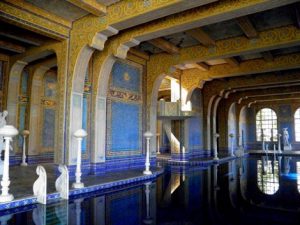
NOT ALL CLEAR GLASS IS THE SAME
RESTORATION
Glass has clearly (pun intended) evolved all through the centuries. Here is a bit of a timeline.
In the 1700's window glass was mouth blown and spun into a disk. It was small and distorted. I think it is quite beautiful. Even when it was big enough to cut with straight edges, it was very distorted.
In the 1800's the process evolved to a mechanically blown cylinder machine. Sheets were larger and the quality was better. Because the sheets were bigger you are now seeing a more traditional window glass. They were large enough to cut square or into a rectangle.
In the 1900's the invention of the Fourcault machine allowed for vertically drawn glass. This was the end of the imperfections except for vertical drawn lines. The end of the waves and the end of the seeds and bubbles.
Even though the quality of glass improved there is often a desire to replace what was there. To keep it looking the same. Glass is available to reproduce each century of glass.
A glass called colonial is a glass with slight distortion and occasional seeds are present. The thickness varies a bit. It is very much like the 1800's glass. Just imagine trying to copy a procedure where the manufacturing was trying to make it perfect but were not being totally successful.
This is a more affordable alternative to colonial. However, it is not a close replication of the 1800. Not for a restoration project where historical integrity is important.
This glass is beautiful. It has fine lines through. Really not a great piece for restoration but totally a step up from window glass. It has a classic timeless look.













